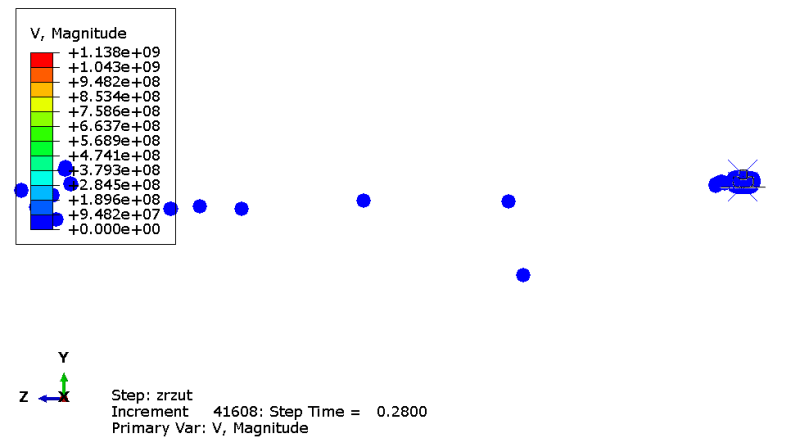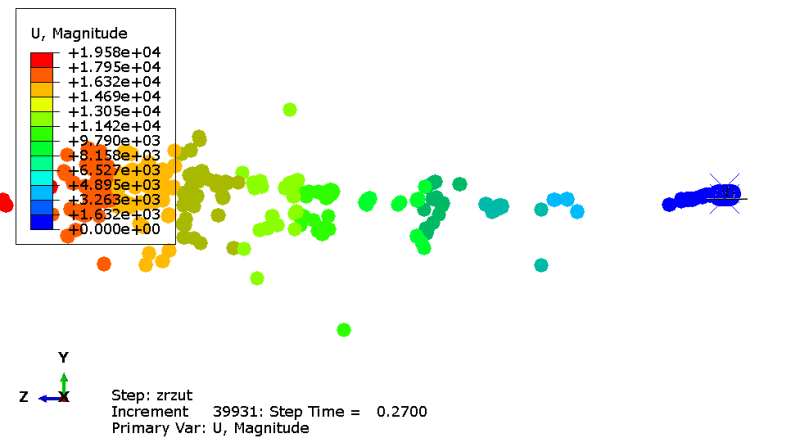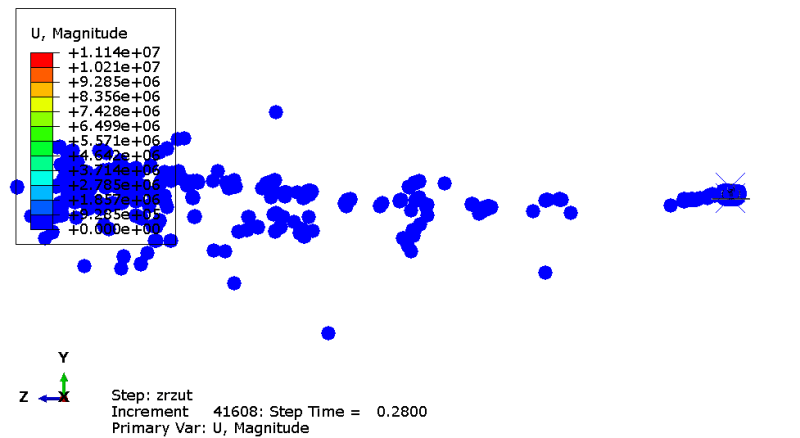Hello everyone!
I'm performing an SPH analysis of the airbag impact. It's equipped with an exhaust vent. The simulation goes well until some point in time when some rapid increase in kinetic energy of the fluid can be observed (it is unjustified and maybe it's a kind of an artifact or the characteristics of the SPH method in Abaqus). I've tried to play with the definition of air material (used this blog post for reference: [URL unfurl="true"]https://info.simuleon.com/blog/how-to-use-cel-to-model-air-pressure[/url]) but it didn't help.
Now here comes my question:
Is it possible to delete the SPH particles depending on some of their kinematic characteristics (like the velocity or displacement magnitude) so the energy wouldn't rise so much? Or maybe someone has some ideas for other options to deal with this issue?
Below you can find some pictures showing the problem:
1. Initial state

2. Velocity field a frame before the spike

3. Velocity field a frame after the spike

4. Displacement field before the spike

5. Displacement field after the spike

I'm performing an SPH analysis of the airbag impact. It's equipped with an exhaust vent. The simulation goes well until some point in time when some rapid increase in kinetic energy of the fluid can be observed (it is unjustified and maybe it's a kind of an artifact or the characteristics of the SPH method in Abaqus). I've tried to play with the definition of air material (used this blog post for reference: [URL unfurl="true"]https://info.simuleon.com/blog/how-to-use-cel-to-model-air-pressure[/url]) but it didn't help.
Now here comes my question:
Is it possible to delete the SPH particles depending on some of their kinematic characteristics (like the velocity or displacement magnitude) so the energy wouldn't rise so much? Or maybe someone has some ideas for other options to deal with this issue?
Below you can find some pictures showing the problem:
1. Initial state

2. Velocity field a frame before the spike

3. Velocity field a frame after the spike

4. Displacement field before the spike

5. Displacement field after the spike

